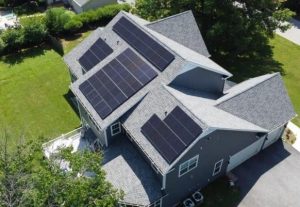What Is the Peak Efficiency of Solar Panels?
In the quest for a greener planet, solar panels play a pivotal role by converting sunlight into electricity. But how efficiently can they perform this conversion? The peak efficiency of solar panels is a measure of this capability, indicating the highest percentage of sunlight that can be converted into usable energy. Let's explore the current landscape of solar panel efficiency and the technological marvels leading the charge.

Understanding Solar Panel Efficiency
Solar panel efficiency is determined by the amount of sunlight that hits the surface of a panel and how much of that sunlight is converted into electrical power. The efficiency rating is a key factor in choosing solar panels, as higher efficiency means more energy generation in less space.
Current Leaders in Solar Panel Efficiency
As of the latest data in 2023, the highest solar panel efficiency has been achieved by panels utilizing monocrystalline silicon. These panels have reached efficiency levels exceeding 22%, with some laboratory tests pushing the boundaries even further into the 25% to 26% range. It's important to note that these are peak efficiencies under ideal laboratory conditions, and real-world performance may vary due to factors like installation angle, temperature, and shading.
Monocrystalline Silicon Panels: The Efficiency Champions
Monocrystalline silicon panels are at the forefront of high-efficiency solar technology. Their single-crystal structure allows for optimal electron movement, minimizing energy loss and maximizing output. Panels from leading manufacturers have consistently achieved efficiency rates above 22%, making them the top choice for installations where space is at a premium.
Polycrystalline Silicon Panels: The Affordable Option
While polycrystalline silicon panels may not reach the peak efficiencies of their monocrystalline counterparts, they offer a more budget-friendly alternative. With efficiencies typically ranging from 15% to 18%, polycrystalline panels are a viable option for larger installations where space is less constrained.
The Cutting Edge: Beyond Silicon
Emerging technologies are set to redefine what's possible in solar panel efficiency. Perovskite solar cells, for example, have demonstrated remarkable efficiency rates in laboratory settings, exceeding 25%. While these technologies are not yet widely available on the commercial market, they represent the future of solar energy, promising even higher peak efficiencies.
The Road Ahead
The quest for higher efficiency does not stop at current achievements. Research and development continue to push the boundaries, with innovations in materials science, cell design, and manufacturing processes. The goal is not just to increase the highest solar panel efficiency but also to make these high-efficiency panels more affordable and accessible.
In summary, while the peak efficiency of solar panels continues to climb, driven by technological advancements and material innovations, the journey towards even greater efficiencies is ongoing. With each breakthrough, we move closer to a future where solar energy plays a central role in meeting the world's energy needs sustainably and efficiently.